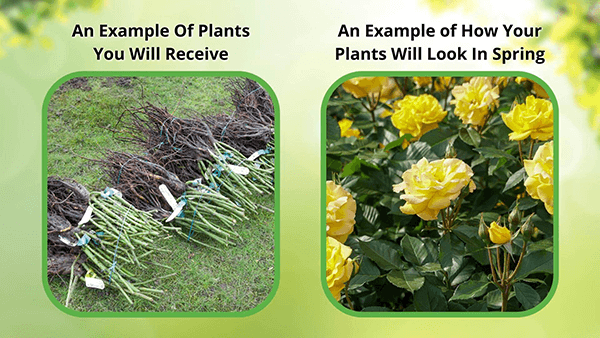



Removes & Absorbs Toxins
Improves Air Quality
Low maintenance & easy to grow
Buy Red Chokeberry Shrubs Online Wholesale
Red Chokeberry shrubs U.S.D.A. hardiness zones are 4 through 9. They require full to partial sun and well-drained, moist soil to grow. The trees will also tolerate dry or clay soil and harsh weather conditions. Their height reaches 6 to 8 feet at maturity, and their width is between 3 to 4 feet. The tree's leaves are shiny green on top and fuzzy on the bottom. They grow bright scarlet berries, a food source for birds year-round.
In Summer, Red Chokeberry Shrubs Have Stunning White Blooms
This bush blooms during summer with beautiful white flowers. It grows to an average of 9 feet tall and 4 feet wide.
This Shrub is also fantastic for almost all landscaped areas because it adapts well to nearly any soil and can be planted in full or partial sunlight. It is also an excellent plant for those with little time to prune. This plant requires minimal trimming and maintenance, making it perfect for offices and any place of business where it could be unmaintained for any period.
The Red Flowering Shrub Reaches 6-8 Feet Tall
This dense bush sports lovely five-petaled white flowers during the spring. Its bold coloring makes it a top choice for brightening and decorating gardens as a ground cover. The bush often reaches 6 - 8 feet tall, though its growth is slow. The bush is a beautiful fruit-bearing bush that requires minimal maintenance, which is another reason it is often featured in gardens. It is a plant that will develop suckers, so these must be trimmed back if the plant's spread is not desired. It can also flourish in the shade. This shrub has vivid scarlet foliage in the fall.
This bush is often found in swampy wetland areas because wildlife loves it. Many animals, such as birds, deer, and others, thrive on its nutrients and vitamins, keeping it full and healthy. This plant thrives well in partial to full shade and wet soil.
The Red Shrubs Does Great In Zones 4-9
This plant is a native bush commonly found in the Eastern United States. Suitable for Hardiness Zones 4 through 9, it grows six to ten feet high and three to five feet wide. The plant is easily propagated from seeds, cuttings, or divisions and has multi-seasonal appeal for lawns and gardens.
In landscaping applications, it is an ornamental plant that produces tiny, delicate blossoms in early spring. During summer, the plant has dark green leaves that turn deep scarlet, purple, or orange in the autumn. The plant is also suitable for creating borders for water features, such as ponds, as the plant tolerates wet, boggy conditions.
The Red Shrub Fights Soil Erosion
These shrubs are also suitable for erosion control along embankments and other erosion-prone areas. It is also an excellent option for borders, alone in a mass planting, or as a single addition to mixed bushes. This versatile thrives in well-drained, moist soil. While it tolerates partial shade well, locations with full sun are ideal for growing them that produce vivid fall foliage and abundant winter berries.
It is resistant to drought, pests, and disease and can withstand salt exposure and pollution. The glossy leaves are dark green with a grey underside that feels fuzzy during summer. The leaves grow along the slender, brown branches and are obovate-shaped with finely serrated margins.
This Shrub has slender stems that are thinner at the base. The clusters of white or pink flowers have five petals and are about 1/3 inch in diameter, while the scarlet berries are about 1/4 inch in diameter. When allowed to remain on the plants, the berries attract various birds during late winter when food is scarce.
Scientific Name
Aronia Arbutifolia
Height
Six to eight feet
Spread
Three to nine feet
Soil Type
Can grow in wet to dry soils
You should consider this Shrub for your garden borders. It’s typically multi-stemmed, providing a dense, bushy form. In the autumn, its foliage turns a beautiful reddish brown. The plant holds bright red berries throughout winter, which is a major ornamental feature. It’s a very resilient shrub. The Red Chokeberry is perfect for year-round appeal.

This Is How Your Plants Will Look upon Delivery
Bloom Season
Bloom/Foliage Color
White
Shipping date depends on the date displayed and chosen when you order from the product's page.
We do not offer warranties on products after 5 days past receiving your plants.
By signing up, you agree with our privacy policy.






